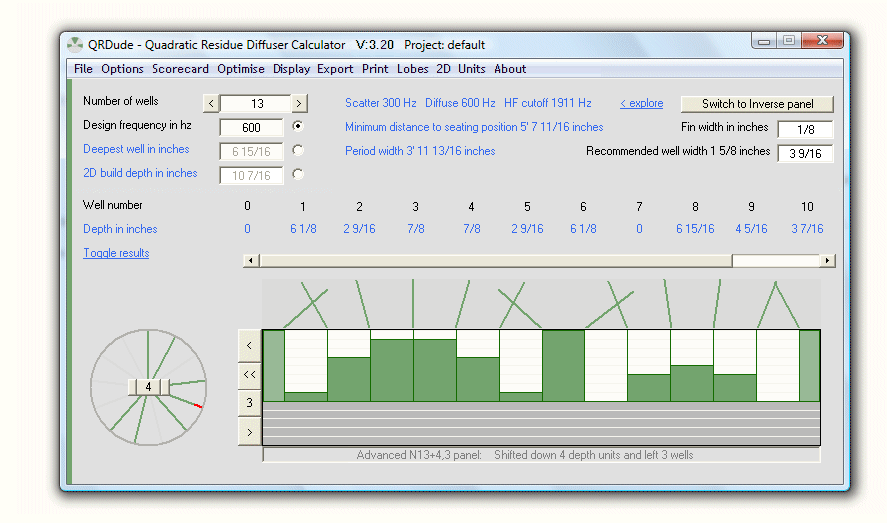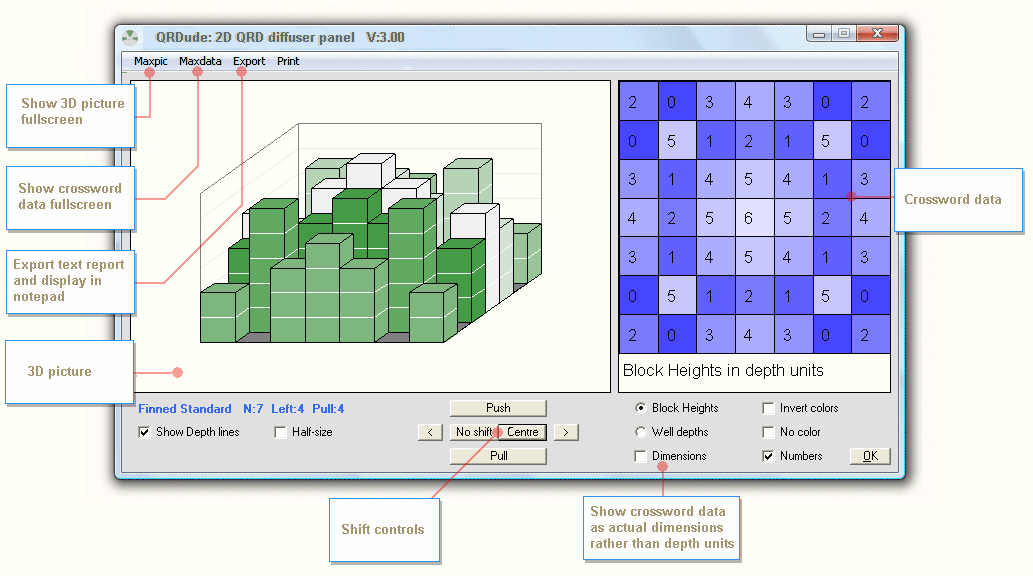QRDude is a calculator for designing QRD diffusers.
In standard mode, it provides similar functionality to existing calculators, although it adds a few features, such as support for inverse panels.
In advanced mode, it supports the design of panels that have had their wells shifted downwards, leading to savings in panel depth or lower design frequencies. Smart well width options can yield better bandwidth.
Supports metric and imperial units.
The software was developed during discussions on another forum, but since "The Shack" is a supporter of my site, it's release is being announced here.
Screenshot of advanced mode:
![Image]()
Available from the QRDude page
In standard mode, it provides similar functionality to existing calculators, although it adds a few features, such as support for inverse panels.
In advanced mode, it supports the design of panels that have had their wells shifted downwards, leading to savings in panel depth or lower design frequencies. Smart well width options can yield better bandwidth.
Supports metric and imperial units.
The software was developed during discussions on another forum, but since "The Shack" is a supporter of my site, it's release is being announced here.
Screenshot of advanced mode:

Available from the QRDude page





